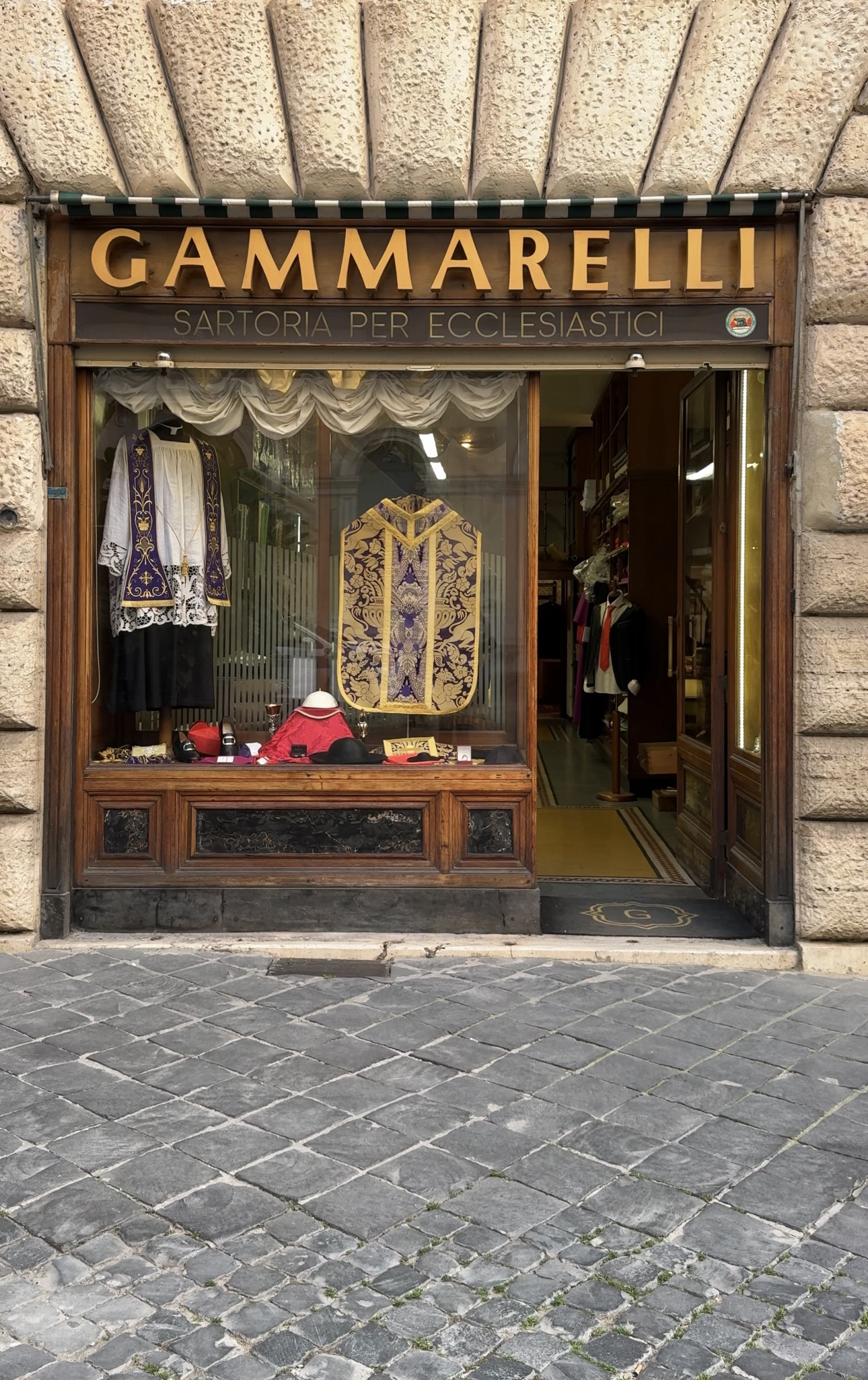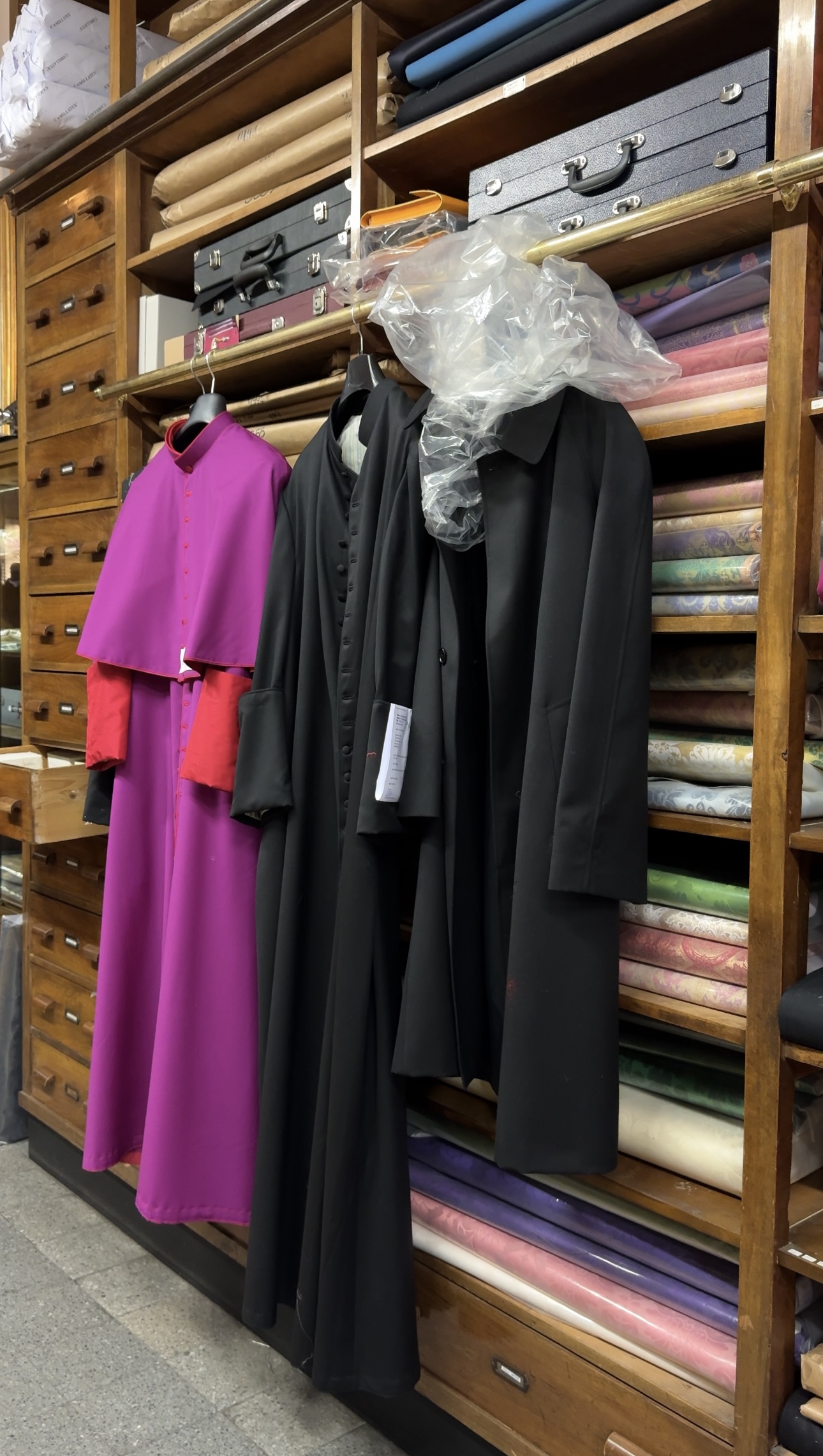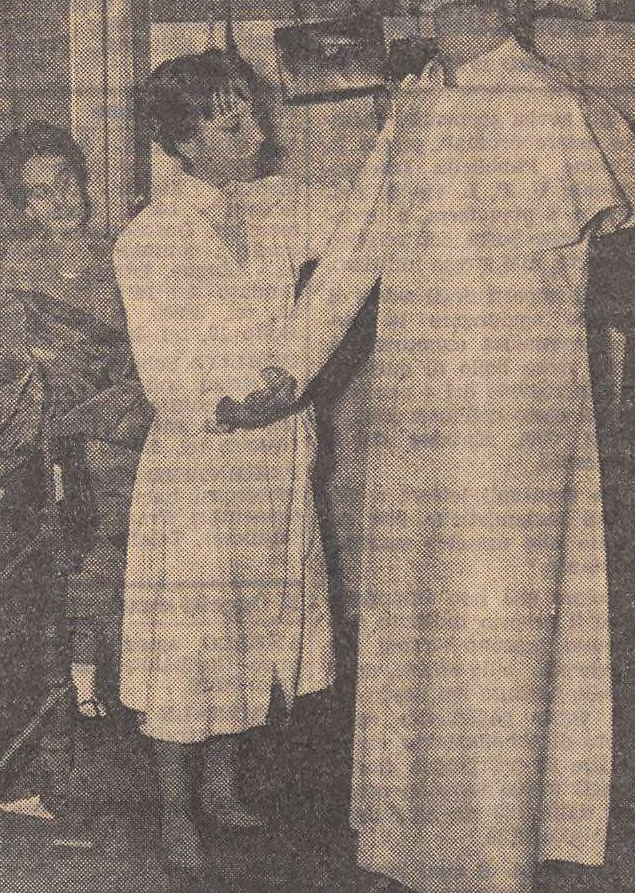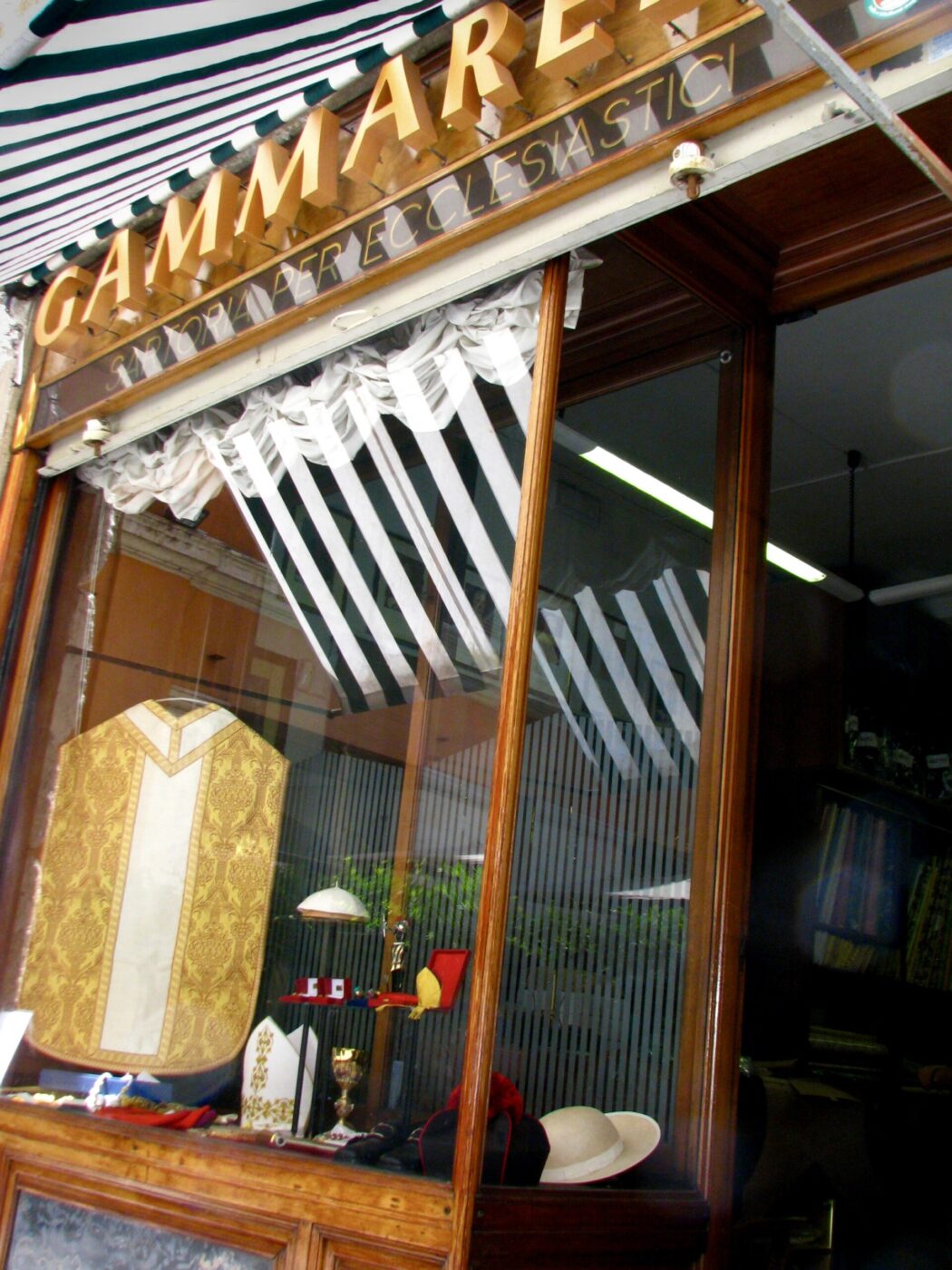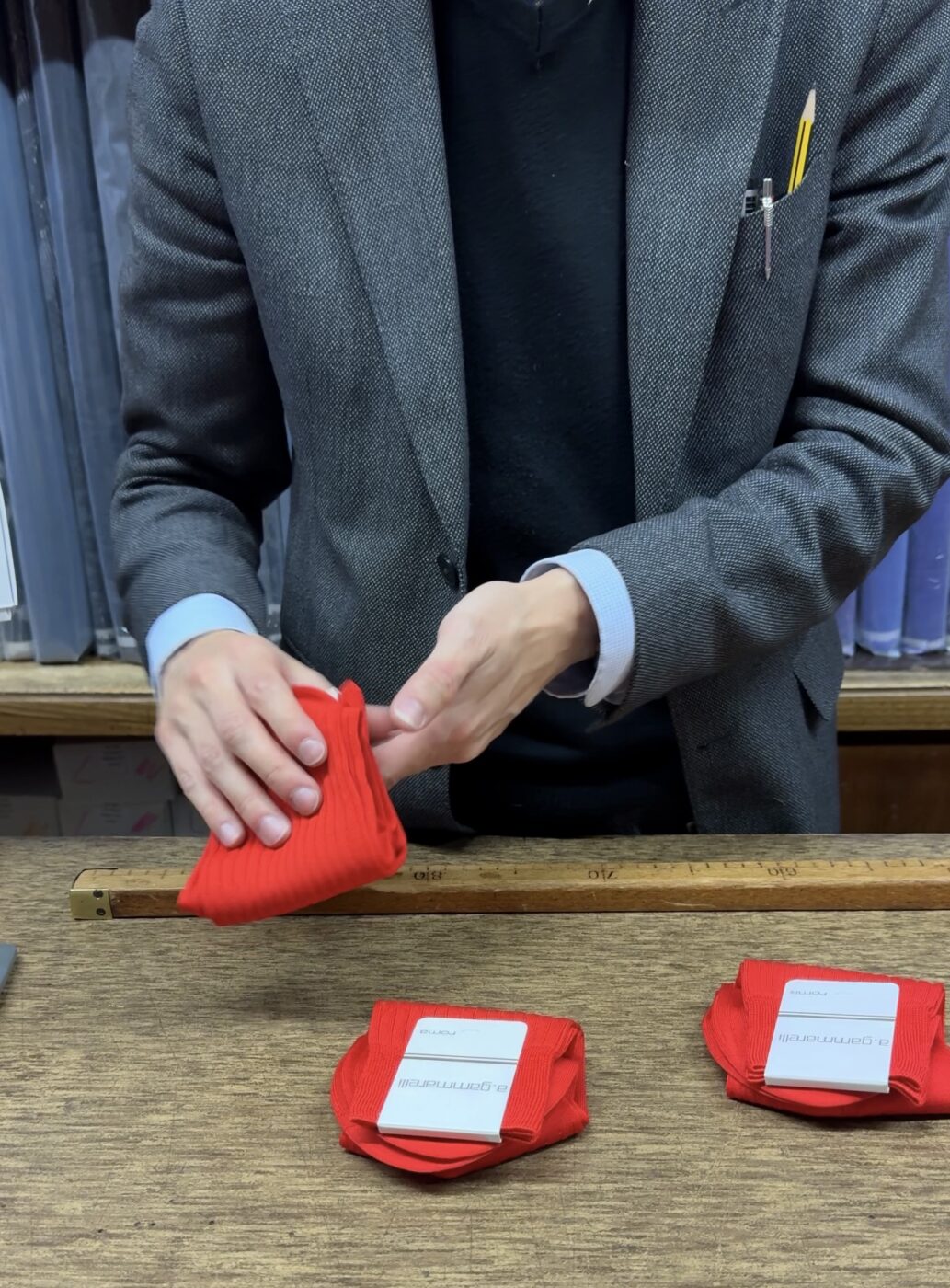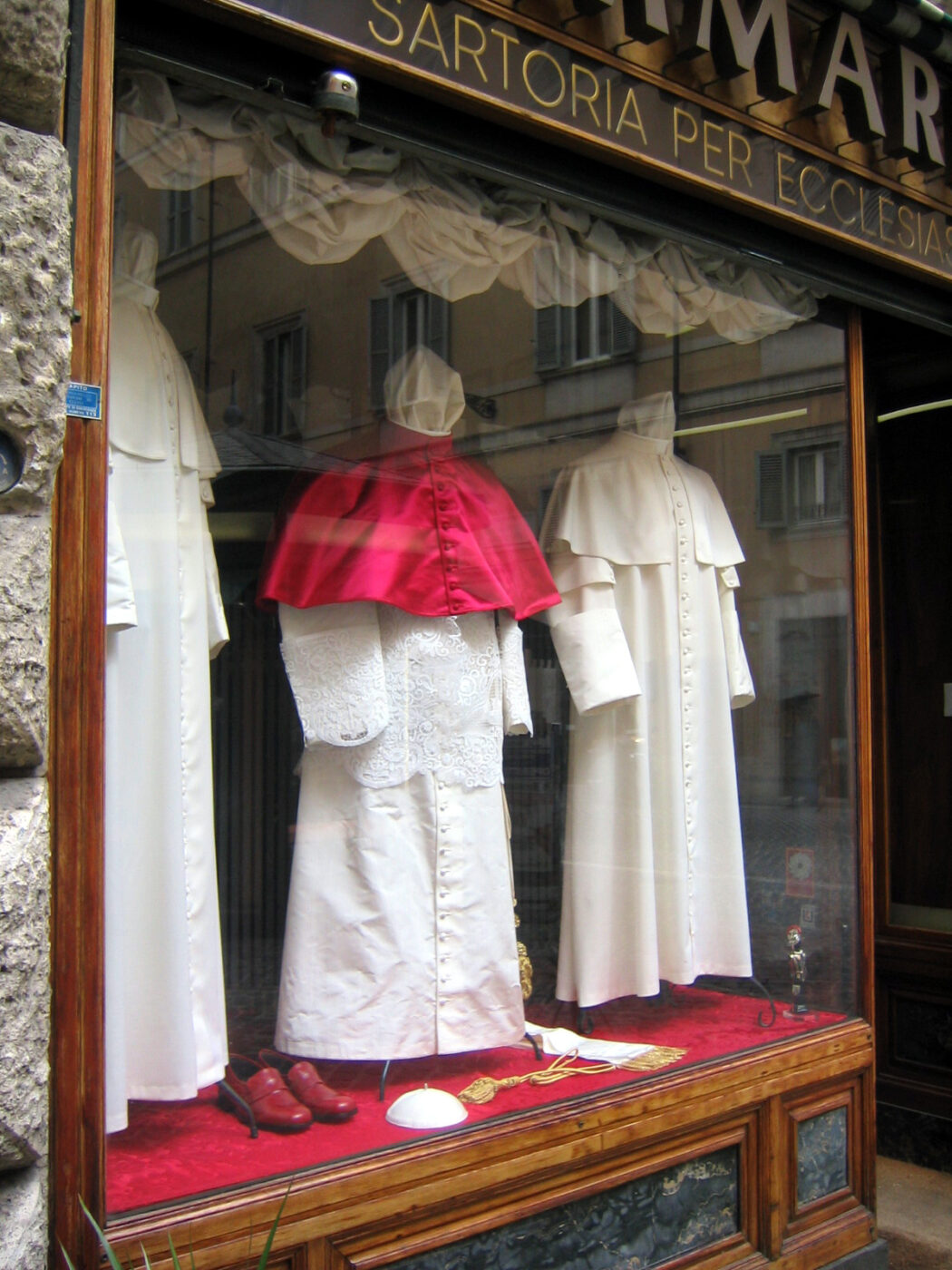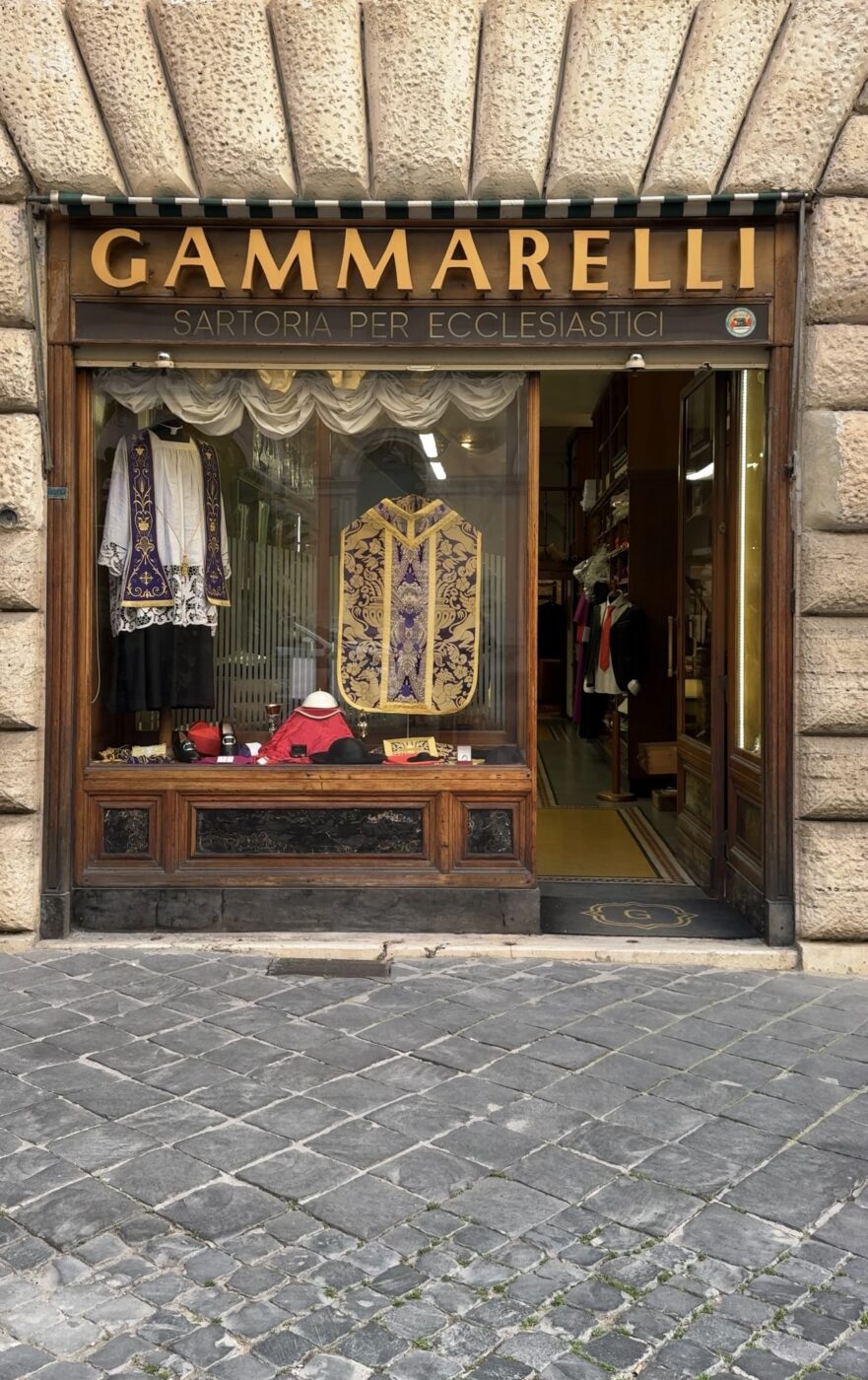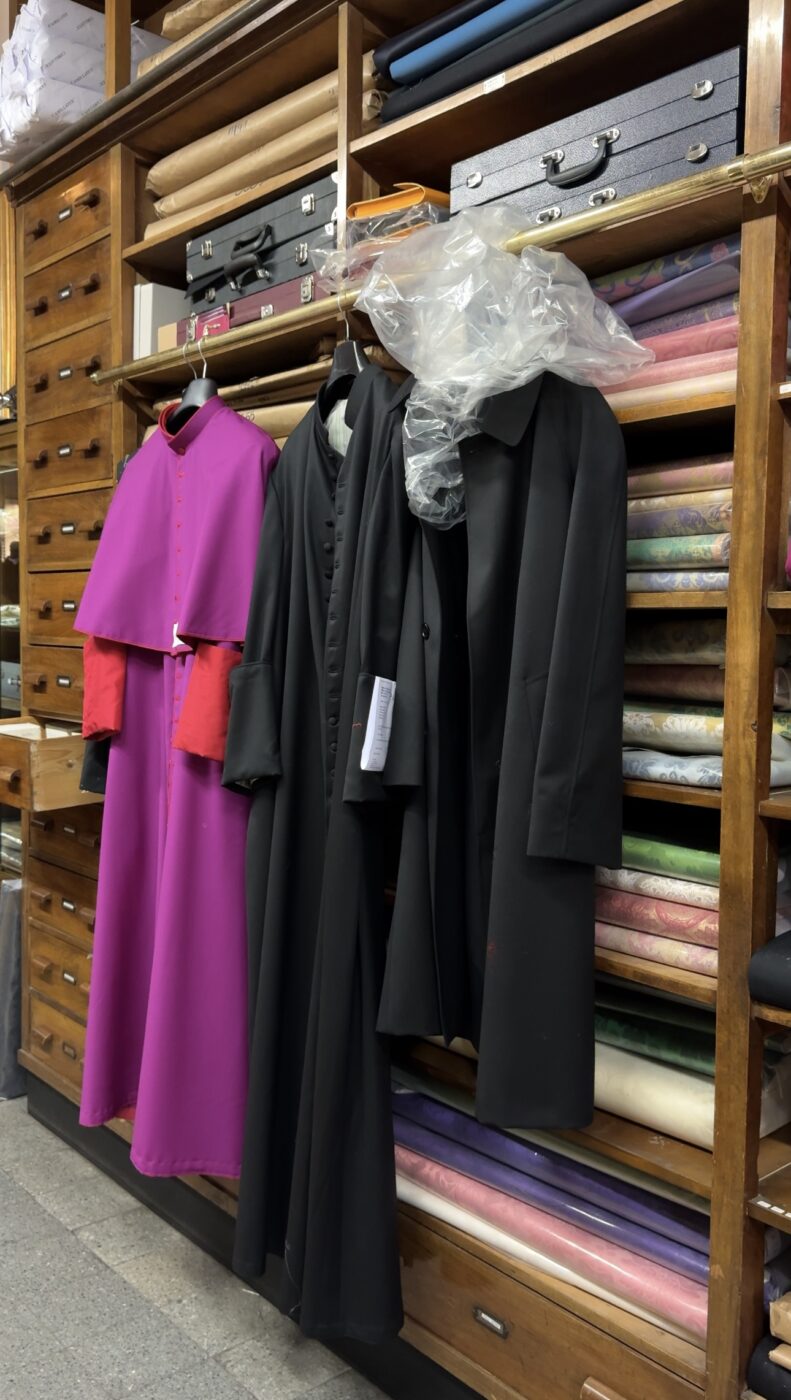As the excitement of conclave starts to fade, the world’s eyes may no longer be on the Vatican, but thoughts very much remain on the (American) papacy. My mind, however, is on the one thing that I shared with the late Pope Francis… We sourced our socks from Ditta Annibale Gammarelli. (Where Pope Leo XIV will buy his socks remains to be seen—but watch this space.)
The Popes may opt for white—a privilege that is their prerogative—while I’m more prone to Cardinal red or the more priestly black.
I’m hardly the only layperson who makes the pilgrimage to Gammarelli when in need of hosiery. Stop by the family-run shop on any given day, and you’ll find well-heeled gentlemen in Brunello Cucinelli or Drake’s making their sartorial selections alongside priests and chamberlains.
Who could blame them? These are, after all, some of the finest socks money can buy—complete with a backstory worth their weight in (religious) gold. And with ecclesiastical dress enjoying a moment of fashion relevance—thanks in part to the visual pageantry of conclave, both IRL and in the 2024 film of the same name—it’s a trend that feels divinely timed. (And, perhaps, a case of life imitating art?)
Gammarelli was established in 1798 and has remained in the hands of the same eponymous family since. After initially joining the ranks of ecclesiastical outfitters clustered around the Vatican, their first papal commission in 1846 granted them something of a royal (or rather, holy) seal of approval.
Their current location—established in 1874 just behind the Pantheon and sharing a building with the Pontifical Ecclesiastical Academy—is prime real estate for those in Rome on official business or simply visiting for cardinal sins.

Since settling there, little has changed. The glass-fronted façade opens into a narrow space lined with built-in cabinets displaying reams of fabric, and a traditional shopkeeper’s counter from behind which commissions are taken for garments like capes for the Knights of Malta and cardinal mozzettas. Clergy and laity alike come for off-the-rack purchases as well.
The walls are adorned with photographs of the popes who’ve chosen Gammarelli as their official tailor—a lineage unbroken since the early 20th century, with the lone exception of Pope Pius XII. As you might expect, there’s an air of tranquillity inside, where purchases are made with a precision akin to taking the holy sacrament.
Whenever I’ve posted a photo of the shopfront to my Instagram Stories (unholy, I know), the most common reply is: “Can you pick me up some socks too?”—a clear sign the secret’s out. And if there’s one way to dip your toe into Catholic attire of the highest order, it’s from the feet up.

John XXIII wearing the camauro, accompanied by Enrico Dante; By Unknown author, Public Domain, https://commons.wikimedia.org/w/index.php?curid=164764806
Gammarelli has been a go-to among the likes of other hosiery makers such as Mazarin and Pantherella for several decades, but it was arguably former French Prime Minister Édouard Balladur who first helped take Gammarelli out of the Church and into the Cabinet, famously revealing to an interviewer—intrigued by his striking socks—that they came from the Roman ecclesiastical tailor.
French bon viveurs Jacques Tiberghien and Vincent Metzger were so enamored with “the idea of wearing bright cardinal-red socks” that, in 2009, they founded Mes Chaussettes Rouges with the express purpose of making Gammarelli’s red socks available beyond the confines of the Eternal City. When another French presidential hopeful, François Fillon, was spotted wearing Gammarelli socks, it only reinforced their cult status among global tastemakers.
“Classic men’s fashion is a world of tradition,” Metzger tells me. “And even though wearing a suit has become less common, the way it’s worn has remained quite similar. The growing number of people who wear suits without a tie has given more prominence to other colorful accessories, such as socks or pocket squares.”
But there’s no point in being all style and no substance. A sovereign—even one presiding over the world’s smallest country—should expect nothing less than the finest quality, and Gammarelli takes as much pride in its socks as it does the rest of its ecclesiastical garments.
Metzger explains that Gammarelli’s socks “emphasize lightness and freshness,” and they employ only highly skilled tailors and seamstresses to create all their vestments. If the church did haute couture, this would be it.
The socks are Made in Italy and available in pure silk, merino wool, or cotton lisle—the latter offered in both the traditional knee length and a mid-calf version. Over time, Gammarelli has expanded the cotton lisle palette beyond the classics to include a vibrant green, sunny yellow, and delicate turquoise. I’ve yet to spot these candy-colored hues beneath a priest’s robes, but my boyfriend’s enthusiasm for them suggests they were designed with a broader audience in mind.
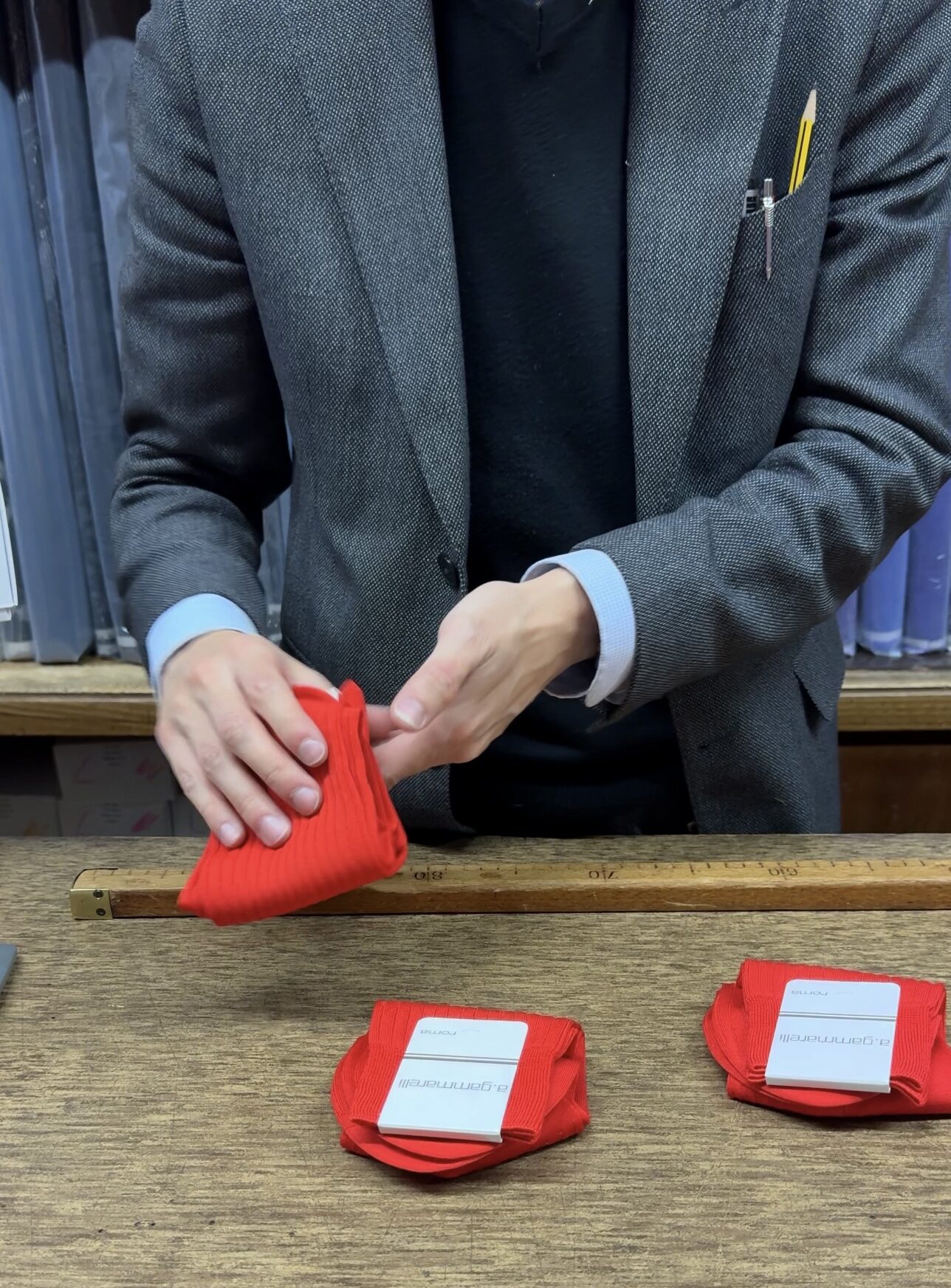
Gammarelli's top-notch red socks
Perhaps I should take a well-clad step back and clarify why I, a woman, am eulogizing the virtues of socks traditionally made for a very male audience. When I first came across Gammarelli nearly a decade ago, I had no idea how I was going to style red socks. I just knew I wanted to get my hands (and feet) on a piece of Roman history.
Once acquired, it became clear the only way forward was to take inspiration from a time-honed aesthetic. Tailored trousers, penny loafers, and a flash of red between—a classic that can’t be beat. Equally effective is jeans and a crisp white shirt (borrowed from the boyfriend, naturally), nonchalantly thrown on. For the bolder among us, a miniskirt and loafers or flats paired with knee-highs is a flex. (Personally, it veers too close to my primary school uniform to pull off with true élan.)
To align with a widening client base that includes politicians, classicists, and trendsetters, Gammarelli has made some adjustments to its marketing strategy to bring them into the 21st century. Their online store may have been designed with priests and cardinals on missions further afield in mind, but it also allows tastemakers to seamlessly incorporate ecclesiastical elements into their wardrobe—if they can tolerate a wireframe that seems frozen in 1999.
At €1,300, a brocade pianeta might be a little OTT for dinner. The butter-soft leather loafers with silver buckle, somewhat reminiscent of Gucci and just €150 a pair, are another story. There are some pretty neat cufflinks on there, too. The socks, though, are a snip at under €20 a pop.
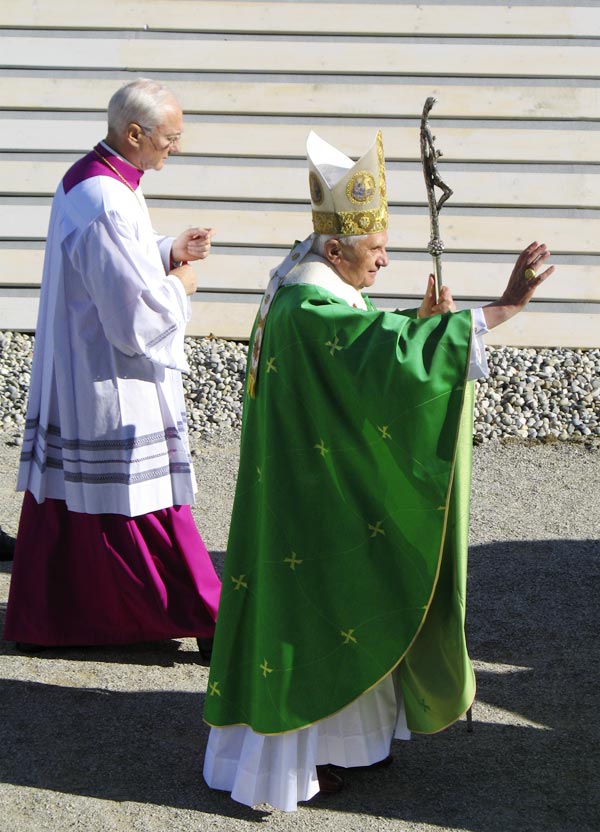
Andreas Piero Marini wearing a Gammarelli-style surplice while assisting Pope Benedict XVI; Original uploader was SCHREIBMAYR at German Wikipedia. Püttmann (Inhaber Schreibmayr)), CC BY-SA 2.0 DE, via Wikimedia Commons
Metzger observes that “each conclave shines a spotlight on Gammarelli and their extraordinary history,” and the shop window is always staged accordingly, upping the ante on the Roman Catholic sartorial aesthetic for maximum effect. From the priest’s buttoned black cassock to the cardinal’s brilliant red vestments trimmed with white lace rochets—complete with touches of gold and purple for good measure—the window is nothing if not striking, though some of the garments featured in the displays are no longer in liturgical use. For instance, the practice of wearing a mantelletta beneath a mozzetta was abolished in 1969, but the piece still appears in the window. Alessia Gammarelli chooses to display them for visual impact and historic interest, if not also for a touch of theater.
There is, however, one constant in this holy window dressing: the white zucchetto, or papal skullcap—an unmistakable symbol of the patronage Gammarelli holds most dear. Each time conclave takes place, the display is redressed: the ornate ecclesiastical garments are removed, and a single zucchetto is placed in the window. It’s a marker of both transition and continuity, bridging the moment between one Pope and the next.
Now that the white smoke has lifted, the spectacle of conclave recedes—but its style endures. It doesn’t take much: a flicker of scarlet beneath a hemline, a staunchly pressed priest’s collar. And just like that, my thoughts return to Gammarelli. Amen to that.
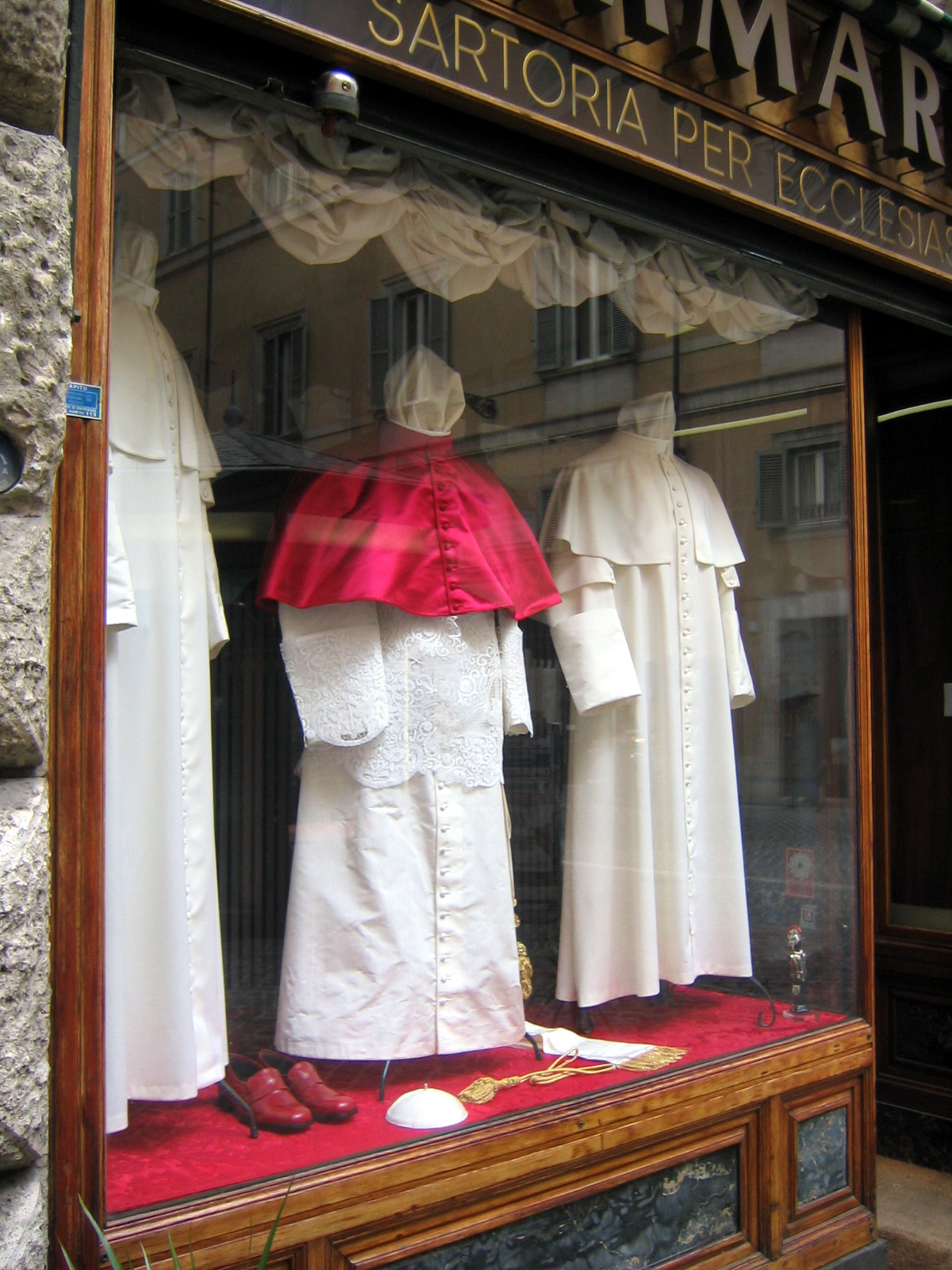
Display window of Gamarelli during the 2005 sede vacante; Anthony M., CC BY 2.0 , via Wikimedia Commons
